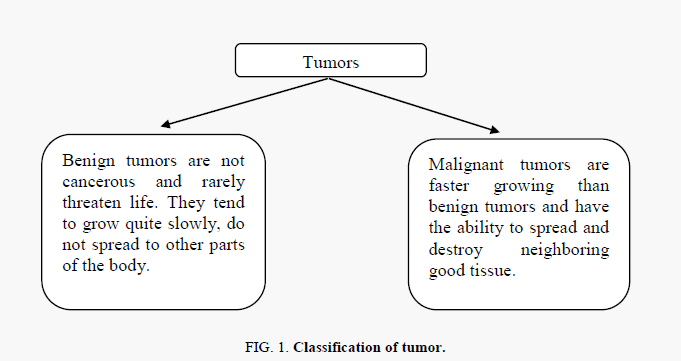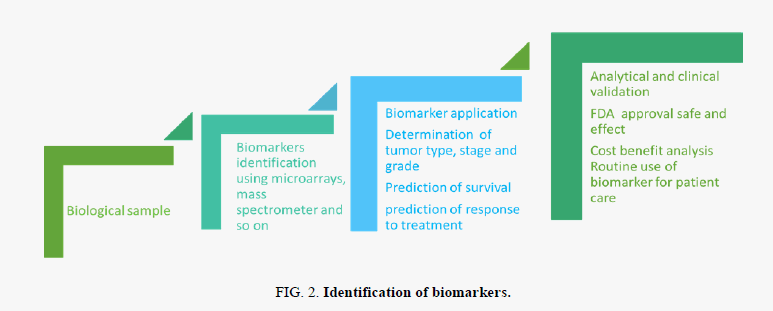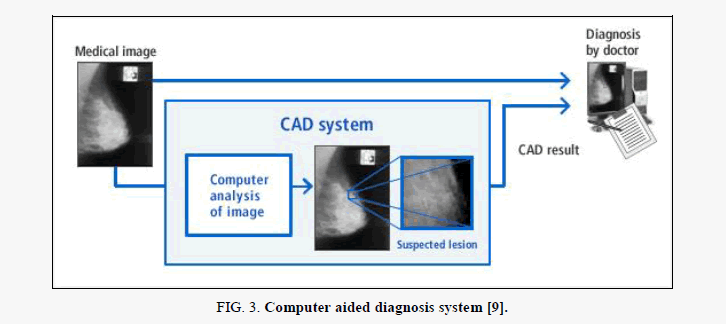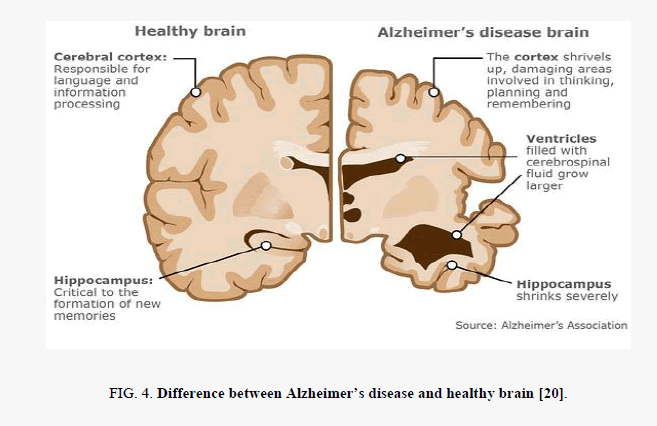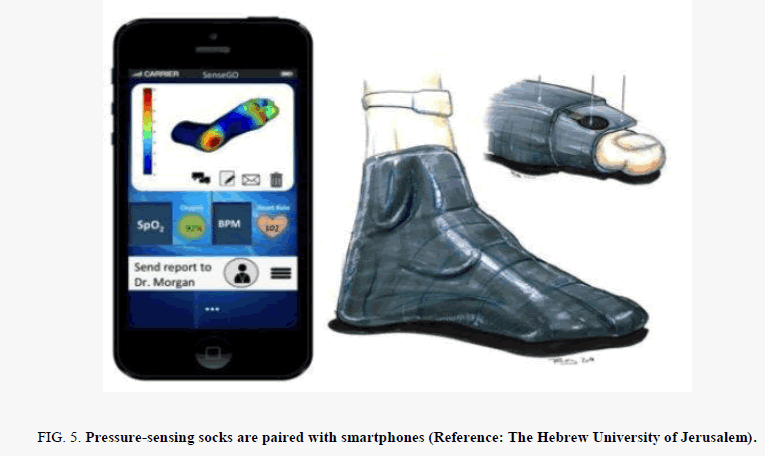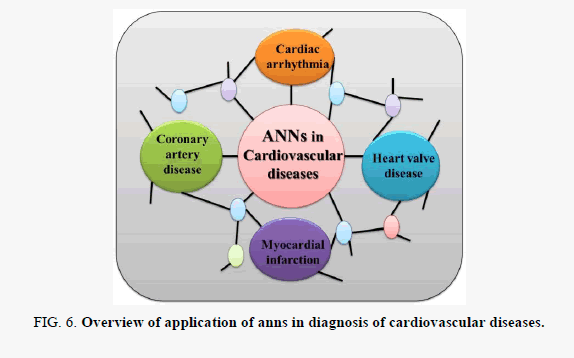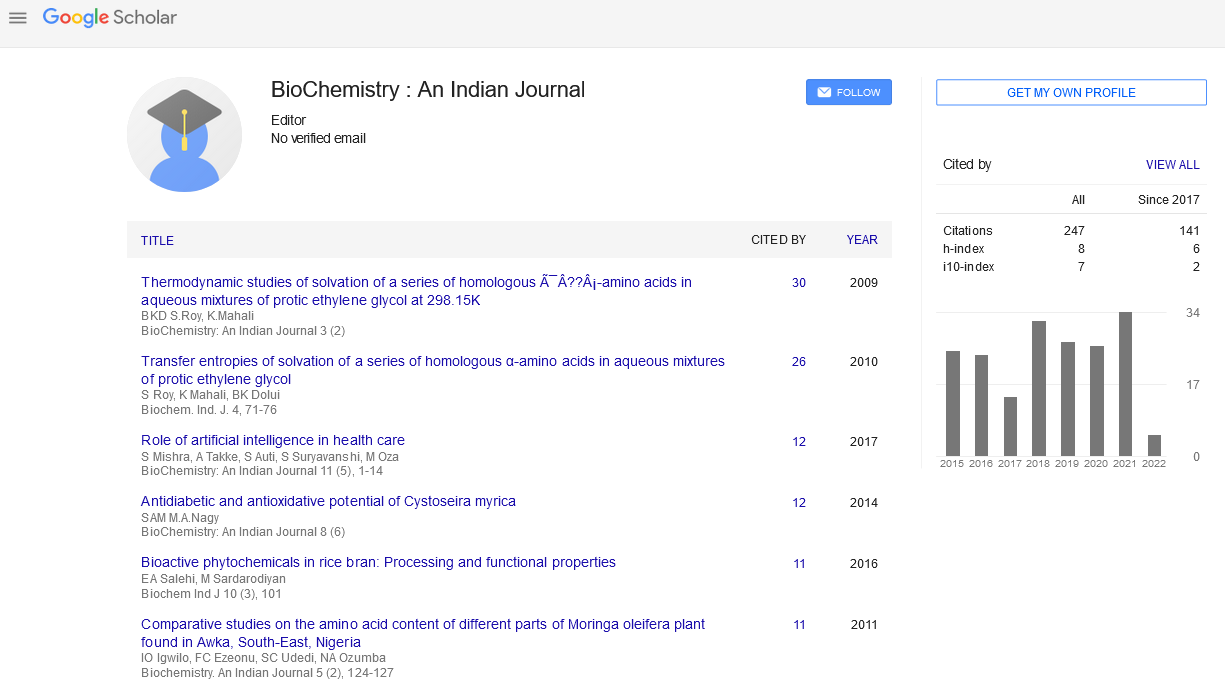Review
, Volume: 11( 5)Role of Artificial Intelligence in Health Care
- *Correspondence:
- Mishra SG
Shobhaben Pratapbhai Patel School of Pharmacy and Technology Management, SVKM's NMIMS University, V. L Mehta Road, Ville Parle (W), Mumbai-400056, Maharashtra, India
Tel: 91224233 2034; E-mail: mishrashweta264@gmail.com
Received Date: October 10, 2017 Accepted Date: October 18, 2017 Published Date: October 24, 2017
Citation: Mishra SG, Takke AK, Auti ST, et al. Role of Artificial Intelligence in Health Care. Biochem Ind J. 2017; 11(5):120
Abstract
The purpose of Artificial Intelligence is to make computers more useful in solving problematic healthcare challenges and by using computers we can interpret data which is obtained by diagnosis of various chronic diseases like Alzheimer, Diabetes, Cardiovascular diseases and various types of cancers like breast cancer, colon cancer etc. It helps in early detection of various chronic diseases which reduces economic burden and severity of disease. Various automated systems and tools like Brain-computer interfaces (BCIs), arterial spin labeling (ASL) imaging, ASL-MRI, biomarkers, iT bra, Natural language processing (NLP)and various algorithms helps to minimize errors and control disease progression. The computer assisted diagnosis, decision support systems, expert systems and implementation of software may assist physicians to minimize the intra and inter-observer variability. To streamline the process of diagnosis artificial intelligence methods specifically artificial neural networks (ANN), Fuzzy approach can be implemented to handle diverse type of medical data. ANN technique discovers the hidden patterns and correlation in medical data and effective in designing support system in clinical field. The application of AI facilitates interpretation of results with high accuracy and speed. This review will explore how artificial intelligence and machine learning can save lives by helping individual patients beat the odds. Some examples of artificial intelligence assisted diagnosis of various diseases are given below.
Keywords
Biomarkers; Arterial spin labeling; Brain-computer interfaces; Natural language processing; Diabetic complications
Introduction
Machine learning has revolutionized our way of life, from language recognition, image retrieval, handwriting recognition, weather forecasting and GPS routes to online search engines. It is now time to concentrate on successes in machine learning for biological discovery to benefit human health. Artificial Intelligence is a branch of computer science which has the potential to analyzing complex data. Their potential is to extract out meaningful relationship with a data set and it can be used in the diagnosis, treatment and predicting outcome in many clinical scenarios. The purpose of Artificial Intelligence is to make computers more useful and to understand the principles. Non-communicable diseases (NCDs), also known as chronic diseases, are not passed from person to person. They are of long duration and generally slow progression. The four main types of non-communicable diseases are cardiovascular diseases (like heart attacks and stroke), cancers, chronic respiratory diseases (such as chronic obstructed pulmonary disease and asthma) and diabetes [1].
Early diagnosis of any chronic disease is very helpful in minimizing compilations of disease. It helps in deciding treatment protocols. There are various diagnosis and treatment protocols which prove that artificial intelligence is a boon in health care. The purpose of artificial intelligence is to make computers more useful in solving problematic healthcare challenges and by using computers we can interpret data which is obtained by diagnosis of various chronic diseases. Some of the areas covered will reveal how artificial intelligence is helpful in diagnosis and treatments of various chronic diseases.
Experimental
Use of biomarkers in detection of various types of cancers
Cancer is a disease which occurs when changes in a group of normal cells within the body lead to uncontrolled growth resulting into a tumor; this is true for all types of cancers except leukemia (cancer of the blood) (Figures. 1- 6). If left untreated, tumors can grow and spread into the surrounding normal tissue, or to other parts of the body via the bloodstream and lymphatic systems and can affect the digestive, nervous and circulatory systems. Tumors (lumps) can be benign or malignant [1].
Figure 5: Pressure-sensing socks are paired with smartphones (Reference: The Hebrew University of Jerusalem).
Cancer is classified into the following categories:
a) Carcinoma – A cancer that arises from the epithelial cells (the lining of cells that helps protect or enclose organs). Carcinomas may invade the surrounding tissues and organs and metastasize to the lymph nodes and other areas of the body. The most common forms of cancer in this group are breast, prostate, lung and colon cancer.
b) Sarcoma – A type of malignant tumor of the bone or soft tissue (fat, muscle, blood vessels, nerves and other connective tissues that support and surround organs). The most common forms of sarcoma are leiomyosarcoma, liposarcoma and osteosarcoma.
c) Lymphoma – Lymphoma is a cancer of the lymphatic system, which runs all through the body and can therefore occur anywhere. The two main forms are non-Hodgkin’s which begins with uncontrolled growth of the-white blood cells-lymphocytes-of the immune system) and Hodgkin’s lymphoma in which cells of the lymph nodes become cancerous.
d) Leukemia – Leukemia is a cancer of the white blood cells and bone marrow, the tissue that forms blood cells. There are several subtypes; commonly known are Lymphocytic Leukemia and Chronic Lymphocytic Leukemia.
Biomarkers are biological molecules, found in blood, other body fluids, or tissues, that are a sign of a normal or abnormal process or of a condition or disease. A biomarker may be measured by a diagnostic test to predict if the body will respond to a treatment for a disease, such as cancer. If the test shows that levels or the existence of a certain biomarker is different than what is typically seen in normal tissues, it may mean the cancer is dependent on the change in that biomarker and may react differently [2]. Examples of biomarkers include: Estrogen/progesterone receptors in breast cancer, Human epidermal growth factor receptor in breast cancer Murine sarcoma viral oncogene homolog B in melanoma, Human epidermal growth in stomach cancer.
Identification of tumor biomarkers involves collection of biological samples then they are further subjected to identification process by using various microarrays, mass spectrophotometers etc.
Examples of biomarkers used for cancer detection
Most candidates that have been followed up in larger studies have shown poor diagnostic value and even those that have been approved for clinical use exhibit lower sensitivity and specificity than the well-known markers of, e.g., acute cardiovascular events. Some USFDA biomarkers examples are given below (Table 1) [3].
| Sr. No. | Marker | Disease | Cut off | Sensitivity | Specificity |
|---|---|---|---|---|---|
| 1 | CEA | peritoneal cancer dissemination | 0.5 ng/mL | 75% | 90.8% |
| 2 | CEA | malignant pleural effusion | NA | 57.5% | 78.6% |
| 3 | Bladder tumor antigen | urothelial cell carcinoma | NA | 52.8% | 70% |
| 4 | Her-2/neu | stage IV breast cancer | 15 ng/mL | 40% | 98% |
| 5 | Alpha-fetoprotein | hepatocellular carcinoma | 20 ng/mL | 50% | 70% |
| 6 | Thyro-globulin | thyroid cancer metastasis | 2.3 ng/mL | 74.5% | 95% |
| 7 | PSA | prostate cancer | 4.0 ng/mL | 46% | 91% |
| 8 | CA 125 | non-small cell lung cancer | 95 IU/mL | 84% | 80% |
| 9 | CA19.9 | pancreatic cancer | NA | 75% | 80% |
| 10 | CA 15.3 | breast cancer | 40 U/mL | 58.2% | 96.0% |
| 11 | leptin, prolactin, osteopontin and IGF-II |
ovarian cancer | NA | 95% | 95% |
| 12 | B-type natriuretic | Congestive heart failure | 8 pg/mL | 98% | 92% |
| 13 | Troponin I | myocardial infarction | 0.1 microg/L | 93% | 81% |
Table 1. Biomarkers examples [3].
Results and Discussion
Artificial intelligence in breast cancer
Breast Cancer is a major cause of concern worldwide. It is the most frequently diagnosed cancer in women and can also occur in men. Breast cancer arises when cells grow and multiply uncontrollably, which produces a tumor or a neoplasm. In women with breast cancer who are younger than 50 yrs of age, chemotherapy increases their 15-yr survival rate by 10%; in older women the increase is 3%.
Early detection of breast cancer is of utmost importance. There are a growing number of breast cancer patients throughout world and there is need for new techniques in diagnosis related with such type of patients and prediction of cancer in its different forms. This can lead to decrease in the rate of mortality [4,5].
At an early stage cancer can be detected with the help of screening tests. The most effective tool for detecting breast cancer in its earliest and most treatable stage is Mammography. Furthermore, this exam allows the detection of other pathologies and may suggest the nature such as normal, benign or malignant. The American Cancer Society recommends the cancer screening guidelines for most adults. The introduction of digital mammography is considered the most important improvement in breast imaging [6].
A growing area of research relates to the use of techniques from Artificial Intelligence applied to the processing of information necessary for the medical diagnosis.
Artificial intelligence (AI) is the subfield of computer science which is exhibited by machines or software and becoming a popular as it has enhanced the human life in many areas. AI developed systems that reliably interpret mammogram data, intuitively translate patient’s charts into diagnostic information which accurately predicts breast cancer risk.
Techniques that depend on the principle of intelligent systems such as neural networks, nearest neighbor methods, computer aided design (CAD) algorithms, fuzzy logic approach, decision trees and linear programming methods. Currently Curemetrix algorithm, iT Bra, NLP (Natural language processing) software, Genes to systems breast cancer database (G2SBC) and Triple negative breast cancer database intelligent systems are used for breast cancer detection.
Computer-aided diagnosis (CAD) systems use computer technologies to detect irregularity in mammograms and these results are used by radiologists for diagnosis which plays an important role. The CAD performance can change from one condition because some lesions are more difficult to detect than others, this is because they have similar characteristics to normal mammary tissue [7].
Higher breast density usually indicates a higher possibility for the presence of malignant tissue. A human observer can distinguish different structures very well without the information of their overall brightness. In automatic breast density classification it is important to decide which parameters give the best division between categories [8].
A smart wearable device iTBra has been developed by Cycardia Health for monthly breast scanning. This can be an important artificial intelligent technique to early breast cancer detection.
Cyrcadia Health is a US based medical biosensor company which utilizes predictive analytics to accomplish early breast cancer detection through personalized wearable devices. The Cyrcadia breast patches are fitted with sensors which track temperature changes in variance over time believed to be a circadian cellular change caused by a reduced PER1 (period estrogen receptor) and PER2 protein expression in the presence of breast cancer. When tissue is healthy, the Cyrcadia predictive algorithmic output displays an irregular variant metabolic pattern. In the case of cancer, the varied pattern of metabolic activity becomes compressed, or demonstrates more of a flat line profile in tissue infused cancers [10].
Automated Breast Density Software (iReveal) accurately estimates percent breast density (PBD), area of dense tissue, total breast area and irrespective of the (FDA-approved) imaging sensor.
iReveal identifies the risk of potentially masking a cancer, then maps the percentage of the fibro glandular tissue to a density category corresponding to the BI-RADS (Breast Imaging Reporting and Data System) standards.
Curemetrix algorithm that detects what direction and projection of breast is in cause was developed to create a unique “breast health score” for each image may lead to improved medical image analysis and anomaly quantification. It also creates a unique “breast health score” for each image may lead to improved medical image analysis and anomaly quantification [11]. G2SBC a resource which integrates data about genes transcripts and protein altered in breast cancer cells. This database represents a systemic biology oriented data integration approach devoted to breast cancer.
Artificial neural network (ANN) is one of the best artificial intelligence techniques for common data mining tasks nonlinear statistical data modeling tools.
ANN is used for classification between cancerous and noncancerous image. Their ability to learn from historical examples, analyze non-linear data, handle imprecise information and generalize enabling application of the model to independent data has made them a very attractive analytical tool in the healthcare [12]. Fuzzy logic is used to predict survival in patients with breast cancer [13]. An intelligent method to assist in the diagnosis and second opinion of breast cancer, used for processing and sorting data obtained from smears of breast mass obtained by fine needle aspirate [14].
Natural language processing (NLP) software algorithms for mammographic imaging characteristics and mammogram reports provide an automated means to aid in data extraction and analysis for clinical decision support system [15].
It is very important to continue the development of these methods which gives the right direction for research in nearly diagnosis of breast cancer and provide the medical experts with a second opinion thus remove the need for biopsy, excision and reduce the unnecessary expenditure.
Management of Alzheimer’s disease with artificial intelligence
Alzheimer’s disease (AD) is the most common neurodegenerative disorder to date, with no cure or preventive therapy. Histopathological hallmarks of AD include deposition of β-amyloid plaques and formation of neurofibrillary tangles in brain. AD is the leading cause of dementia, characterized by substantial memory loss, impairment of multiple cognitive function and behavioral changes which affects a large population worldwide [16]. A report published by WHO in 2015 estimates that, worldwide the number of people living with Alzheimer’s disease are 47.47 million which will increase to 75.63 million in 2030 and 135.46 million in 2050 [17,18]. Diagnosis and management of AD remains an expensive and laborious process that is completely unsustainable in aging population.
Application of artificial intelligence (AI) to this incurable disease may help in early detection. Use of various automated systems and tools like Brain-computer interfaces (BCIs), Arterial spin labeling-magnetic resonance imaging (ASL-MRI), Electroencephalogram (EEG), Positron emission tomography (PET), Single photon emission computed tomography (SPECT) scans and various algorithms helps to minimize errors, early detection and control disease progression [19].
Use of different AI algorithm in brain MRI scans sets a path to distinguish between early stages of Alzheimer’s disease. Brain-computer interfaces (BCIs) help AD patients to convey basic thoughts by sending commands from the brain to an external device. Arterial spin labeling (ASL) imaging is promising functional biomarker that creates perfusion maps which recognizes blood perfusion pattern in various regions of brain assisting detection of different stages of AD. MRI coupled with ASL can intercept or slow disease advancement from subjective cognitive decline to mild cognitive impairment to AD [21, 22]. Uses of automated machine learning method have potential use in management of AD.
Electroencephalograms (EEG) have been demonstrated as a reliable tool in AD research and diagnosis. It is simple, non-invasive and potentially mobile brain imaging technology. EEG has high temporal resolution and may therefore contain crucial information about abnormal brain dynamics in AD patients. Three major effects of AD on EEG have been observed: slowing of the EEG, reduced complexity of the EEG signals and perturbations in EEG synchrony. AD seems to affect different frequency bands in EEG by specific ways like decrease of power in higher frequencies (alpha and beta, 8 Hz–30 Hz) and increase of power in low frequencies (delta and band, 0.5 Hz–8 Hz) is associated with in Mild cognitive impairment (MCI) patients as compared to healthy age control groups [23]. Besides, scientific studies show promising results in detection of early stage of AD such as Mild cognitive impairment (MCI) [24].
Positron emission tomography (PET) scans is a functional neuroimaging technique that provides information about physiological and biological processes in brain. PET scan measures the cerebral metabolic rate for glucose, which is progressive and correlated with AD [25]. Flurodeoxyglucose (FDG) is widely used PET metabolic tracer in AD. FDG PET provides a promising biomarker of disease progression, in AD intake of glucose and FDG becomes impaired in brain. PET has been used to detect people at risk for AD even before the symptoms start which serve as effective tool for early diagnosis [26]. Single photon emission computed tomography (SPECT) is a molecular imaging technique is able to get an impression of the regional cerebral blood flow. The majority of SPECT studies find that the pattern of hypoperfusion in temporal and parietal cortex region. These SPECT perfusion differences occur in brain regions of normal and disease condition helps early diagnosis of AD [27]. Early detection of AD by artificial intelligence helps in early initiation of the treatment for AD, which slowdowns the disease progression, improves patient’s quality of life and further reduces the economic burden involved in healthcare management.
Management of diabetic complications using artificial intelligence
Diabetes is a chronic progressive metabolic disorder characterized by high blood glucose level. Increase in blood glucose is observed due to either destruction of pancreatic β-(Type I) or cells resistance to insulin (Type II). The disease progression leads to serious micro vascular or macro vascular complications namely neuropathy, nephropathy, retinopathy and cardiomyopathy.
The management of diabetes and its complication is very tough job as there are several factors that keep blood sugar level in control. However increasing sample volume of diagnostic results makes it even more robust. The application of Artificial intelligence (AI) in diagnosis or monitoring of diabetes and its complication may improve the patient’s quality of life. The computer assisted diagnosis, decision support systems, expert systems and implementation of software may assist physicians to minimize the intra and inter-observer variability. The application of AI facilitates interpretation of results with high accuracy and maximum speed.
Foot amputation is one of the advanced stages of diabetic neuropathy. To monitor and for early detection the group of scientists from Hebrew University of Jerusalem and Hadassah Medical Center have developed a washable intelligent sock (SenseGOTM) that is able to track pressure changes on patient’s foot. The senseGO contains number of pressure sensors that collect the information regarding pressure, incorrect posture, overexertion and ill-fitting shoes-the variables responsible for foot ulcers. Further senseGO relays this information on smartphone app [28].
Peripheral diabetic neuropathy is foremost cause of disability in diabetic patients. The early diagnosis can be done by Morphometric parameters of corneal nerves. Ferreira and co-workers developed a fully automatic algorithm for morphometric parameters extraction and corneal nerve segmentation. They enhanced the corneal images through phase shift analysis, the structure classification was done by Hessian matrix computation and then nerves were constructed using morphological methods. The developed algorithm produced good results for nerve searching and nerve length measurement [29].
Microalbuminuria (MA) is an independent predictor of Diabetic nephropathy and cardiovascular diseases. Detection of microalbuminuria is very important screening tool to identify diabetic nephropathy. Marateb and co-workers developed fuzzy MA classifier system to predict MA without measuring urine albumin. They used clinical parameters usually monitored in type II diabetic patients. The rule induction was done by particle swarm optimization. Statistic featuring was done with multiple logistic regressions. Age, Gender, BMI, DD, systolic BP, FBS, HbA1c, Bs2hpp, CHOL, LDL, HDL and TG were used as input parameters. The performance of MA classifier was evaluated using 10-fold cross-validation. The minimum sensitivity, specificity, precision and accuracy of the proposed fuzzy classifier system with feature extraction were 95%, 85%, 84% and 92%, respectively [30].
Decline in kidney function is variable in diabetic patients; hence it is difficult to predict determinants of diabetic nephropathy. Cho and co-workers applied various machine learning techniques such as feature selection methods and support vector machine (SVM) classification and developed a new visualization system which uses a nomogram approach. The proposed method can predict onset of diabetic nephropathy about 2-3 months before the actual diagnosis. Additionally, the visualization system provides physicians with intuitive information for risk factor analysis [31].
Sanchez and co-workers evaluated the performance of a comprehensive computer-aided diagnosis (CAD) system for diabetic retinopathy (DR) screening, using a publicly available database of retinal images and to compare its performance with that of human experts. They applied previously developed CAD system to 1200 digital color fundus photographs. The system achieved an area under the ROC curve of 0.876 for successfully distinguishing normal images from those with DR with a sensitivity of 92.2% at a specificity of 50%. These compare favorably with the two experts, who achieved sensitivities of 94.5% and 91.2% at a specificity of 50% [32].
Artificial neural network in diagnosis of cardiovascular diseases
Significant information regarding cardiovascular diseases ranging from detail of symptoms to different types of biochemical data and results of imaging devices are available to the facilitate diagnosis by clinicians. Artificial Neural Network (ANN) is a mathematical or computational model which inspired by the structural and functional characteristics of biological neural networks [33]. ANNs involve extensive use of science and technology. It is also used to predict probability of the disease pathology. It has proven its application in the classification of leukemia, diagnosis of diabetes and tuberculosis, radiograph and living tissue image analysis [34]. The most important application of this technique is in the diagnosis of cardiovascular diseases. This technique can predict heart diseases based on information available on various risk factors such as family history, diabetes, age, hypertension, alcohol intake, high cholesterol, tobacco smoking and physical inactivity.
Structurally the ANN is formed by a series of “neurons” which are arranged in three layers i.e. input layer, hidden layer and output layer. A weight connection connects each neuron in layer with each neuron in the next layer and, the value of the weight shows the strength of the connection. The number of layer and number of neuron in the layer depends on the complexity of the system. The neurons in the input layer receive the data and transfer them to neurons in the first hidden layer through the weighted links where the processing of data takes place and the results are transferred in the output layer [35]. ANN works on nonlinear mathematical model to mimic human brain’s own problem-solving capability, by utilizing formerly solved examples to make a system of neuron which can make a new decision. This neural network is highly adaptive and can generalize the input information and give appropriate solution for unfamiliar data also [36].
Baxt et al. used ANN for the diagnosis of myocardial infarction in 331 adult patients suffering from anterior chest pain and compared the diagnostic sensitivity and specificity with that of the clinician attending the patients. In the study ANN was utilized using clinical data available of 351 patients hospitalized for MI and later the ANN system having the data was tested on 331 patients with anterior chest pain. The outcome of the study showed that ANN may be a valuable aid in diagnosis of myocardial infarction [37]. In another study the system has been used for diagnosis of coronary heart diseases using traditional and genetic factors. The study involved use of clinical, laboratory, functional, coronary angiographic and single nucleotide polymorphism data fed into the system. Thereafter the system was used to diagnose 487 patients resulting into accuracy up to 64% of correct diagnosis of coronary heart diseases [38]. It is also been effectively used in classification of heart sound signals measured by stethoscope for the diagnosis of heart valve conditions [39]. Even in case of ischemia in myocardial perfusion imaging the results have been very encouraging with significant diagnostic accuracy [40].
Conclusion
Early detection of various chronic diseases by artificial intelligence helps in early initiation of the treatment for it, which slowdowns the disease progression, improves patient’s quality of life and further reduces the economic burden involved in healthcare management. It is very important to continue the development of these methods which gives the right direction for research in nearly diagnosis of various chronic diseases.
The biomarkers plays significant role in diagnosis of various types cancers. This will minimize mortality rate and gives more time to focus on treatment protocols.
Artificial Intelligent system has been recently promoted as one of the key features leading to a real step forward in health care. The ideas presented above belong to a long-run multi-objective research challenge targeting both theoretical and practical points of view and covering the breast cancer research through the development and implementation of efficient AIS.
Diagnosis and management of AD remains an expensive, laborious and stressful process that is completely unsustainable in aging population. Modern artificial intelligence research is producing tools like Arterial spin labeling-magnetic resonance imaging (ASL-MRI), Brain-computer interfaces (BCIs), Positron emission tomography (PET), Electroencephalogram (EEG), Single photon emission computed tomography (SPECT) scan which will help to solve challenges in management of AD.
AI opens gateway for early diagnosis of diabetic complications which can ease treatment for the same. The techniques such as SenseGo and confocal microscopy with AI helps in early and accurate diagnosis of DN Intelligent MA classifier system helps in early detection of nephropathy significant accuracy and precision. An early diagnosis of diabetic retinopathy can be done with CAD system. Hence the use of AI in treatment of diabetic complication will be of paramount importance.
AI can significantly help in clinical diagnosis of myocardial infarction, coronary heart diseases and heart valve diseases. The ANN models can provide accuracy of above 90% which can help in diagnosis and prediction of CVD through a software.
References
- (http://www.who.int/topics/noncommunicable_diseases/en/); 25-01-2017
- Gaglio S, Genoves M, Nicolinic C, et al. Expert systems for cancer chemotherapy. C Math Applic. 1987;14(9-12):793-802.
- Polanski M, Anderson NL. A list of candidate cancer biomarkers for targeted proteomics. Biomarker Insights. 2006;1:1-48.
- Ontario HQ. Cancer screening with digital mammography for women at average risk for breast cancer, magnetic resonance imaging (MRI) for women at high risk: An evidence-based analysis. Ont Health Technol Assess Ser. 2010;10(3):1-55.
- Early Breast Cancer Trialists' Collaborative Group (EBCTCG). Effects of chemotherapy and hormonal therapy for early breast cancer on recurrence and 15-yr survival: An overview of the randomised trials. Lancet. 2005;365(9472):1687-1717.
- Gotzsche PC, Jorgensen KJ. Screening for breast cancer with mammography. Cochrane Database Syst Rev. 2013;6:CD001877.
- Fujita H, Uchiyama Y, Nakagawa T, et al. Computer-aided diagnosis: The emerging of three CAD systems induced by Japanese health care needs. Comput Methods Programs Biomed. 2008;92(3):238-48.
- Dandolu V, Hernandez E. Mammographic breast density. N Engl J Med. 2007;356(18):1885-87.
- Diagnostic support system for mammography.
- Cycardia Health Early Detection Technology for Breast Cancer.
- Rakow-Penner R, Abdelgelil N, Eghtedari M, et al. Curemetrix La Jolla. 2016; 92037.
- Saritas I. Prediction of breast cancer using artificial neural networks. J Med Syst. 2012;36(5):2901-2907.
- Seker H, Odetayo MO, Petrovic D, et al. Soft feature evaluation indices for the identification of significant image cytometric factors in assessment of nodal involvement in breast cancer patients. L Alasio Anticancer Res. 2002;22:433-8.
- Sizilio GR, Leite CR, Guerreiro AM, et al. Fuzzy method for pre-diagnosis of breast cancer from the fine needle aspirate analysis. Biomed Eng Online. 2012;11(1):83.
- Gao H, Bowles EJA, Carrell D, et al. Using natural language processing to extract mammographic findings. J Biomed Inform. 2015;54:77-84.
- Grosso C, Valentao P, Ferreres F, et al. The use of flavonoids in central nervous system disorders. Curr Med Chem. 2013;20(37):4694-4719.
- [ADI] Alzheimer's disease International; Policy Brief for G8 Heads of Government: The Global Impact of Dementia. 2013;2013-50.
- Barua A, Ghosh M, Kar N, et al. Prevalence of depressive disorders in the elderly. Ann Saudi Med. 2011;31(6): 620-4.
- Cummings JL, Isaacson RS, Schmitt FA, et al. 2015: A practical algorithm for managing Alzheimer's disease: What, when and why. Ann Clin Transl Neurol. 2015;2(3):307-323.
- http://readanddigest.com/eight-amazing-ways-to-keep-your-brain-healthy-and-prevent-alzheimers-disease
- TT Liu, GG Brown. Measurement of cerebral perfusion with arterial spin labeling: Part 1. Methods. J Int Neuropsychol Soc. 2007;13(03):517-525.
- http://press.rsna.org/timssnet/media/pressreleases/14_pr_target.cfm?ID=1890 06 July 2016.
- Deursen JAV, Vuurman EFPM, Verhey FRJ, et al. Increased EEG gamma band activity in Alzheimer’s disease and mild cognitive impairment. J Neural Transm. 2008;115(9):1301-11.
- Dauwels J, Vialatte F, Cichocki A. Diagnosis of Alzheimer's disease from EEG signals: where are we standing? Curr Alzheimer Res. 2010;7(6):487-505.
- Small GW. West J Med. 1999;171(5-6):293.
- Yang J, Huang SC, Mega M, et al. Investigation of partial volume correction methods for brain FDG PET studies. IEEE Trans Nucl Sci. 1996;43(6):3322-7.
- Coimbra A, Williams DS, Hostetler ED. The Role of MRI and PET/SPECT in Alzheimers Disease. Curr Top Med Chem. 2006;6(6):629-647.
- Hebrew University of Jerusalem. To help diabetics, intelligent socks are paired with smartphones.
- Ferreira A, Morgado AM, Silva JS. Automatic corneal nerves recognition for earlier diagnosis and follow-up of diabetic neuropathy. In: International Conference Image Analysis and Recognition Springer Berlin Heidelberg. 2010;60-69.
- Marateb HR, Mansourian M, Faghihimani E, et al. A hybrid intelligent system for diagnosing microalbuminuria in type 2 diabetes patients without having to measure urinary albumin. Computers in Biology and Medicine. 2014;45: 34-42.
- Cho BH, Yu H, Kim K, et al. Application of irregular and unbalanced data to predict diabetic nephropathy using visualization and feature selection methods. Artif Intell Med. 2008;42(1):37-53.
- Sánchez CI, Niemeijer M, Dumitrescu AV, et al. Evaluation of a computer-aided diagnosis system for diabetic retinopathy screening on public data. Invest Ophthalmol Vis Sci. 2011;52(7):4866-71.
- Nakajima K, Matsuo S, Wakabayashi H, et al. Diagnostic performance of artificial neural network for detecting Ischemia in myocardial perfusion imaging. Circulation Journal. 2015;79(7):1549-56.
- Morton AH. An introduction to neural computing. Int Thomson Comput Press. 1995.
- Fernandez CJ, Gonzalez-Perez S, Ramos-Diaz JC. Artificial neural networks for closed loop control of in silico and ad hoc type 1 diabetes. Comput Meth Progr Biomed. 2012;106(1):55-66.
- Er O, Temurtas F, Tanr?kulu A. Tuberculosis disease diagnosis using artificial neural networks. J Med Syst. 2008;34(3):299-302.
- M Saghiri, K Asgar, K Boukani, et al. A new approach for locating the minor apicalforamen using an artificial neural network. Int Endod J. 2012;45:257-265.
- Olaniyi E, Oyedotun O, Khashman A. Neural network diagnosis of heart disease. IJISA. 2015;7:12.
- Zupan J, Gasteiger J. Neural networks in chemistry and drug design. Wiley VCH. 1999.
- Atkov O, Gorokhova S, Sboev A, et al. JC. 2012;59(2):190-4.
